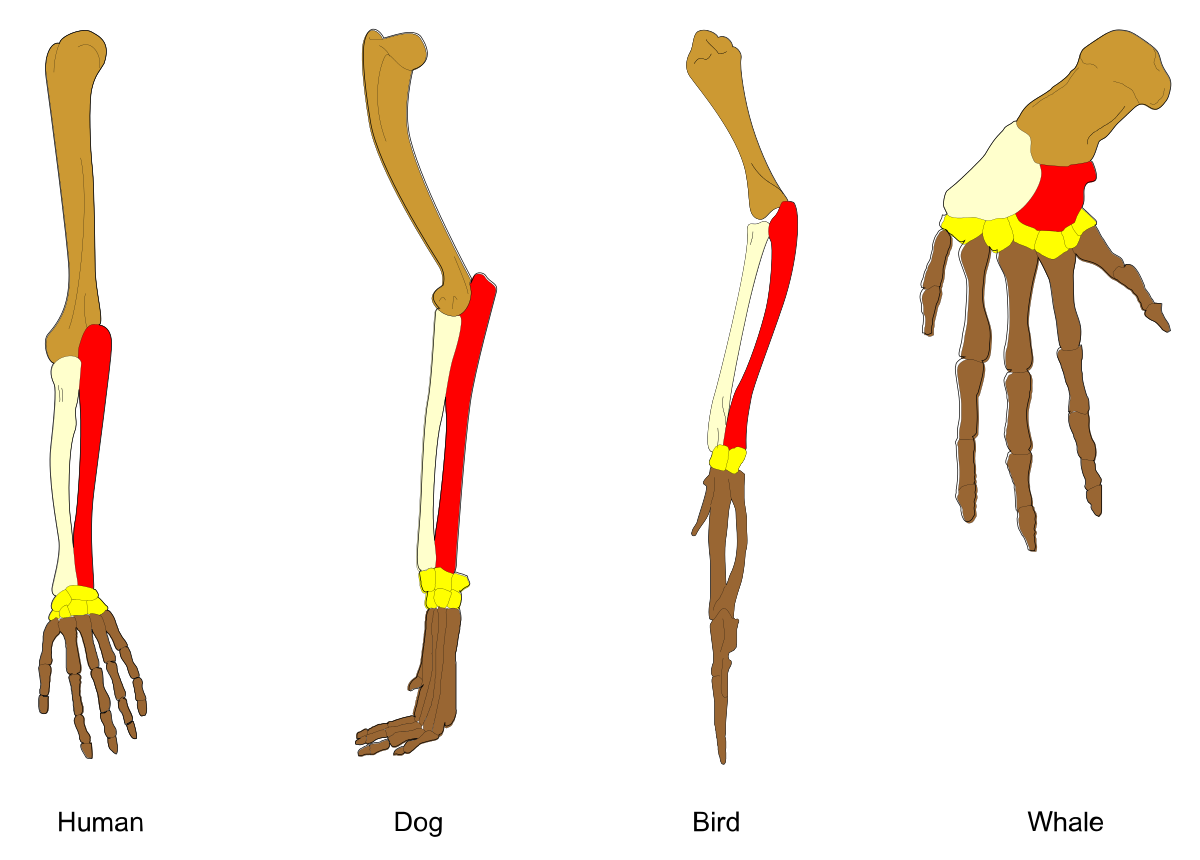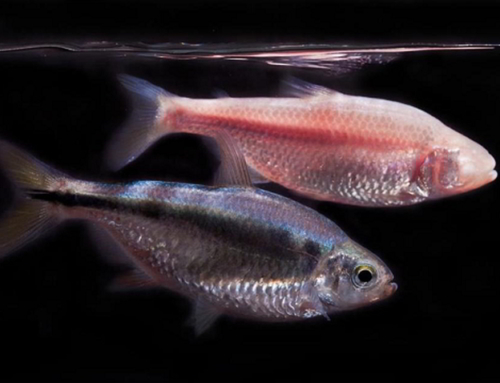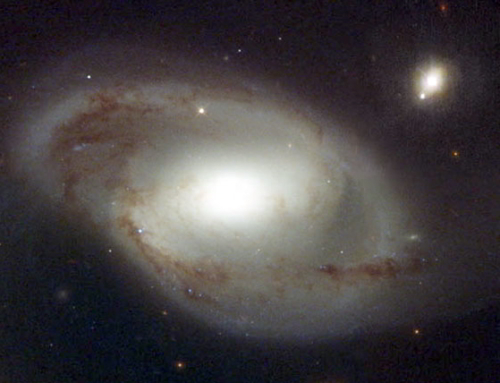Darwin believed that life evolved from simple to complex life forms. He said: “On the view that each species has been independently created, I can see no explanation of this great fact in the classification of all organic beings; but, to the best of my judgment, it is explained through inheritance and the complex action of natural selection, entailing extinction and divergence of character, as we have seen illustrated in the diagram.” 1
- Darwin’s Tree of Life
Homology
Two important principles contributed to Darwin’s theory. The first was homology, the similarity of body parts in two or more species. Darwin saw the similarities in structure and position among very different animals, such as the forearms shown here, being the result of natural selection working on shared ancestral patterns. Descent with modification was inferred from this.
- Homology animal forearms
Superposition
The second principle was superposition. With the oldest rocks at the base and the most recent at the top, it was predicted that biological evolution would therefore be demonstrated as a succession from the oldest to the youngest geological strata. The idea of certain types of fossil being identified with different rock layers was already established in Darwin’s day and forms an aspect of the geological column today.
Such a succession has not been realised, as Stephen J Gould states: “The absence of fossil evidence for intermediary stages between major transitions in organic design, indeed our inability, even in our imagination, to construct functional intermediates in many cases, has been a persistent and nagging problem for gradualistic accounts of evolution.” 2 He developed the theory of punctuated equilibria in response to this. Another commentator remarked: “These gaps might be due to failure in fossilization, or to mistakes in the genealogy, or to wrongly identified fossils; or they could be (and have been) taken to show that the theory of evolution is wrong.” 3
- The geological column
Molecular biology
With the development of molecular biology additional evidence has been invoked to demonstrate evolution. However, Carl Woese, who pioneered the construction of molecular phylogenetic trees in support of evolutionary theory in 1990, wrote eight years later that “the universal ancestor is not an entity, not a thing” and concluded that “the universal phylogenetic tree, therefore, is not an organismal tree at its base” 4
W Ford Doolittle, another molecular biologist, argued that “new hypotheses, having final forms we cannot yet guess, are called for”, 5representing the tree of life as a bush.6 In 2007 he commented “there is no independent evidence that the natural order is an inclusive hierarchy”.7
- A phylogenetic tree of life
The prevailing view today is that the process of life does not lend itself to patterns expressed by simple tree-forms. A reticulated structure, such as is now proposed, and the lack of fossil evidence throw into question the theory of a universal common ancestor.









